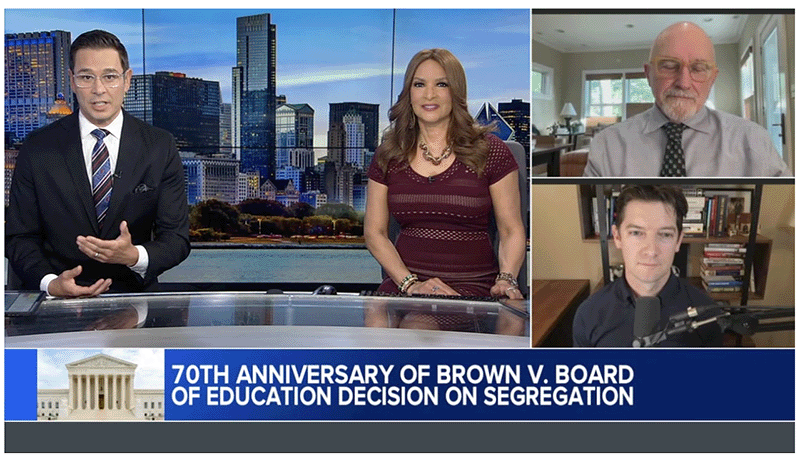
Last week we announced Brown v. Board Revisited, in which we recreated the landmark Supreme Court case using modern synthetic voice technology. Along with our partners—Jerry Goldman, Northwestern University’s Knight Lab, Ukraine-based AI engineering company Respeecher, Italian design firm Idib, and a crew of talented journalists and voice actors—we brought the original arguments of the case out of the archive and gave people a new way to experience it.
In an article on the front page of May 19th’s Wall Street Journal, Jess Bravin wrote:
While there have been re-enactments of the case, AI adds a “magic layer that translates this project from a historical recreation to something that’s brand new,” says Spooler CEO James Boggs.
Reviews are starting to come in. …
“Amazing,” says retired Justice Stephen Breyer, a Warren-era Supreme Court clerk. “It is a little creepy. But it seems to me a good idea and well worth the effort.”
Brown v. Board Revisited also received coverage from the Associated Press, who note that the project provides “a new window into history”:
Instead of a deepfake, the Brown project is a “deep true,” Boggs said.
“We are not creating new content,” he said. “These were things that were actually said and we have the historical documentation to prove it.”
Similar recreations have a natural limit. It was only in the late 1800s that sound recordings of voices have been available. Go back further, and they’d essentially be guesses. Who knows what George Washington actually sounded like?
But for the curious, the “Brown Revisited” project offers a new window into history.
Legal scholar Laurence Tribe praised the project on X, and historian Jill Lepore devoted an episode of her podcast to the re-creation of the case. Spooler CEO James Boggs, along with Prof. Goldman, discussed the details of our process for ABC Chicago.

To learn more about Brown v. Board Revisited, visit the site or check out our video explaining the voice cloning process.